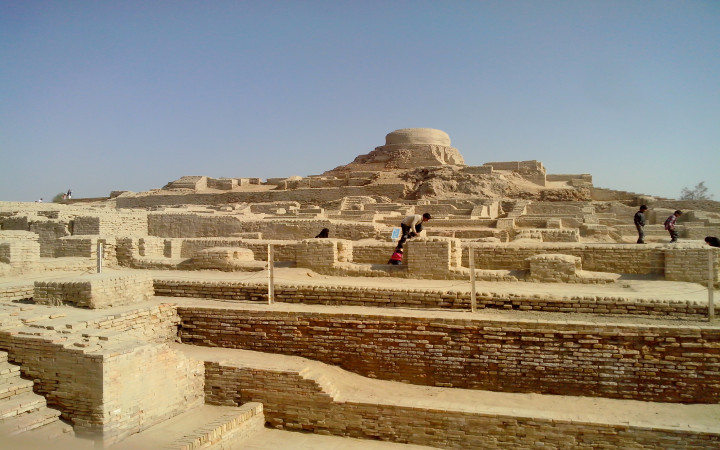Today’s Wonder of the Day was inspired by olivia. olivia Wonders, “What happened to Mohenjo Daro?” Thanks for WONDERing with us, olivia!
Do you love a good mystery? We know many of our Wonder Friends do. Today’s Wonder of the Day is about a curious ancient city. People are still learning about it today! This place is called Mohenjo Daro.
The ruins of Mohenjo Daro were found in the early 20th century. Since then, archaeologists have worked hard to put together the pieces of this ancient puzzle. They believe the city was built around 2600 B.C.E. That would make it the oldest known civilization of the Indian subcontinent!
Mohenjo Daro was built around the same time as the Great Pyramids of Egypt. It’s the most well-preserved city of the Indus civilization. Today, visitors can still see what’s left of streets and homes built from baked brick.
Experts think up to 40,000 people may have once lived in Mohenjo Daro. The city was split into two sections. People today call these the citadel and the lower town. The city included a 900 square foot Great Bath and about 700 wells. These were part of a water system that enabled homes to have their own baths and toilets.
The ruins of this ancient city hold many interesting clues about the people who lived there. But archaeologists are just as interested in what may be missing from the location. They haven’t found any religious or government buildings. What does this mean? Experts think the people who lived there may have been part of a largely egalitarian society.
What happened to Mohenjo Daro? That’s a mystery. Experts name a few possibilities. First, there are signs of flooding in the ancient city. An overflowing Indus River could have hurt the civilization. This would have forced people to move elsewhere.
A second theory is also connected to the Indus River. Experts believe that, when Mohenjo Daro was built, it was on the banks of the waterway. Over time, though, the path of the river changed. Today, the Indus River is about two miles away from the ruins of the city. People may have moved elsewhere when the river became too far away.
Finally, it’s important to remember that societies change over time. Even today, nations evolve. They change their governments and customs. Changes in the culture may have led people to leave the city.
In 1980, Mohenjo Daro was named a UNESCO World Heritage Site. Since then, efforts to save what’s left of the city have ramped up. Experts say the area’s humidity and groundwater salt content are harming what’s left of the city. Some of its walls are collapsing. Those in charge are looking for ways to save the ruins.
Would you like to see Mohenjo Daro in person one day? What other locations do you dream of visiting? The world is full of ancient places left to explore!
Standards: CCRA.L.3, CCRA.L.6, CCRA.R.1, CCRA.R.2, CCRA.R.4, CCRA.R.10, CCRA.SL.1, CCRA.SL.2, CCRA.W.3, CCRA.L.2, CCRA.L.2




